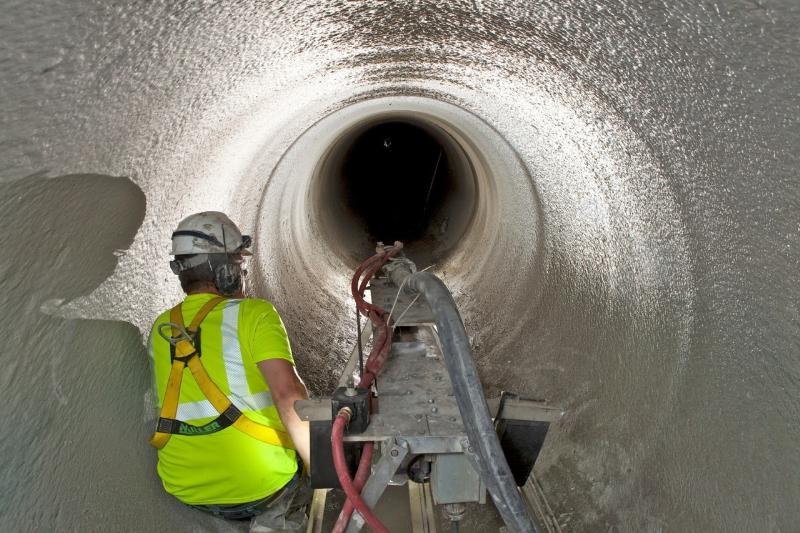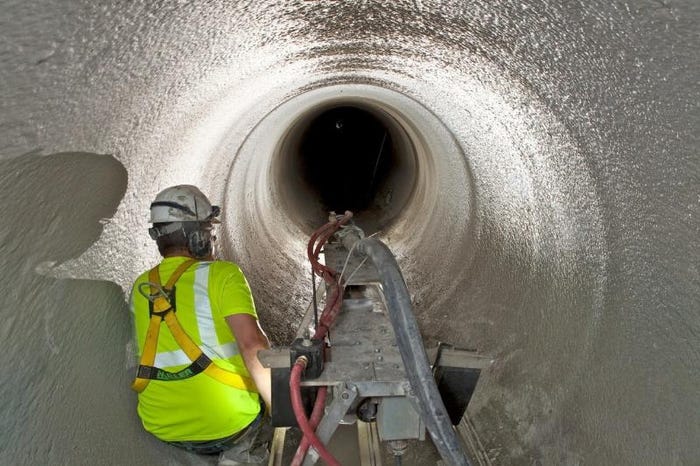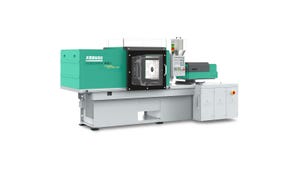Spray-applied geopolymer liner used in large diameter sewer pipe repair technology
We hear a lot in the news about the crumbling condition of much of the aging infrastructure in the U.S. In fact, according to the American Society of Civil Engineers, capital investment needs for the nation's wastewater and storm water systems are estimated to total $298 billion over the next two decades. Now, Inland Pipe Rehabilitation (IPR) (www.teamipr.com) in conjunction with Milliken Infrastructure Solutions (www.milliken.com), are doing something about it.
May 29, 2014

We hear a lot in the news about the crumbling condition of much of the aging infrastructure in the U.S. In fact, according to the American Society of Civil Engineers, capital investment needs for the nation's wastewater and storm water systems are estimated to total $298 billion over the next two decades. Now, Inland Pipe Rehabilitation (IPR) (www.teamipr.com) in conjunction with Milliken Infrastructure Solutions (www.milliken.com), are doing something about it. The two companies developed the EcoCast advanced geopolymer relining system to provide a more cost-effective sewer infrastructure repair and rehabilitation solution.
"Finding more cost-effective sewer rehabilitation solutions is the only way this country will be able to afford to have these very necessary repairs done," said Joe Cutillo, IPR's CEO. "We spent two years perfecting the application process, while Milliken, our development partner, refined the GeoSpray material, because when it comes to introducing new sewer rehabilitation technologies, there is really no margin for error."
|
Severely deteriorated 60-in. diameter pipe, relined with innovative EcoCast Advanced Geopolymer Relining System, was completely restored without the need to dig and replace it. |
To prove the effectiveness of the EcoCast advanced geopolymer as a viable solution for large diameter cement-based sewer pipe rehabilitation, IPR and Milliken participated in an ongoing field study conducted by the EPA Office of Research and Development. According to Steve Henning, technical director at IPR, and Mike Vellano, VP sales and marketing for IPR, the latest in geopolymer mortars used for this type of infrastructure rehabilitation fall into the "aluminosilicate family, which when fully cured, basically turns into a synthetic aluminosilicate stone, or ceramic," they wrote in a technical article that appeared in Trenchless Technology magazine (April 2012, pg. 52), prior to the testing.
"Silica, Alumi8na and Oxygen atoms are the primary ingredients in an aluminosilicate geopolymer which form its primary 'polymer' backbone or chain of covalently bonded atoms," they wrote. "This inorganic polymer forms three-dimensionally through-out the mass as long cross-linked chains of atoms, forming a crystalline polymer system.
"Geopolymers work by having the covalently bound atoms at the surface of the particles displaced by alkali molecules such that their molecular structure is disrupted creating future attachment sites. The attachment and cross-linking of molecules creates a monolithic structure that results in superior material properties." (www.trenchlessonline.com)
The on going field-testing began in April 2013, conducted by the EPA Office of Research and Development. The work was performed by IPR using its proprietary EcoCast installation and application system. Milliken supplied the GeoSpray geopolymer material. A 60-inch, 160-ft. long, reinforced concrete pipe, which was severely deteriorated, had exposed rebar and several areas where infiltration was present. After cleaning and grouting the infiltration points, the spraying operation took only four days to complete. Post-lining inspection showed the pipe to be infiltration free, with no signs of steel reinforcement or cracking.
The advanced geopolymers will stick and adhere to virtually any surface, said IPR in its latest release, because geopolymers are capable of bonding and building to great thicknesses. IPR has also tested the geopolymer on corrugated metal pipe, brick sewers, wet wells and more with good success in rehabilitating aging infrastructures. "Some of the advantages of using GeoCast geopolymer mortar are that the material is more durable with higher compressive strength, higher flexural strength and higher modulus of elasticity," wrote Henning and Vallano. Additionally, "once the material is applied onto the damaged pipe, it quickly forms into a crystalline structure for higher resistance to acids, lower porosity and greater surface durability.
"The material properties are exceptionally resistant to environmental factors like heat and cold and allows for extended application environments."
About the Author(s)
You May Also Like





